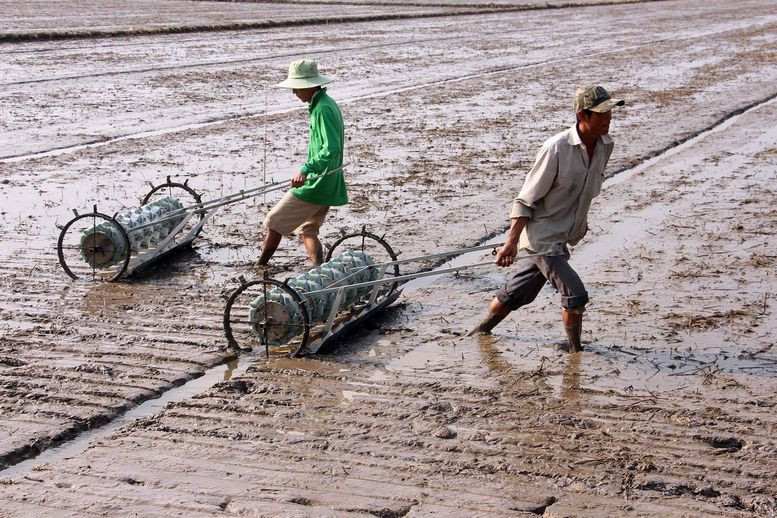
According to the Ministry of Agriculture of Rural Development (MARD), when applying the sustainable cultivation method under the project, Vietnamese farmers can reduce the rice production cost by 20 percent, thus increasing income (added value in rice chain is 30 percent, while the profitability rate for rice farmers is over 40 percent).
Also, the new cultivation method has helped reduce 5-6 tons of CO2 equivalent per hectare.
After considering the initial results, MARD and local authorities agreed to expand the rice sustainable low-emission cultivation area to all 12 cities or provinces in the Mekong Delta. The application will be implemented in the 2024 autumn-winter and 2024-2025 winter-spring crops.
Under the project, Vietnam will focus on developing 200,000 hectares of high-quality low-emission rice by 2025. In 2026-2030, the cultivation area will increase by 800,000 hectares in the 12 cities/provinces.
MARD has joined forces with local authorities, World Bank experts and IRRI ((The International Rice Research Institute) to build a system of measuring, reporting and inspecting emissions in accordance with international standards to set up scientific foundation for measuring the projected entire rice area.
They have also checked infrastructure conditions and sought resources to upgrade production infrastructure in 33 concentrated production areas.
According to MARD Deputy Minister Tran Thanh Nam, his ministry has built a proposal on an infrastructure and technical support program which borrows capital from the World Bank ($330 million in preferential loans and $100 million in reciprocal capital). The capital will provide financial resources for the 2026-2027 period.
However, the capital mobilization and resource preparation is not keeping up with the progress. In 2026-2030, Vietnam needs capital for infrastructure development in order to speed up the preparation and deployment of public investment projects under the program.
Nam said besides the preferential loans from the World Bank and the State’s public investment capital, the project needs to mobilize VND20 trillion more in 2025-2027 from enterprises, cooperatives and farmers to implement the program.
Of this, the credit package worth VND10 trillion from commercial banks will be important as it is used to buy materials, collect rice, and install machines and equipment to preserve and process rice, as well as build warehouses and logistics chain.
Commercial banks have been requested to provide preferential loans with interest rates lower by at least one percent per annum lower than that currently applied for commercial loans. In addition, the subjects of the rice chain may also get insecure loans worth VND100 million-3 billion.
Tam An